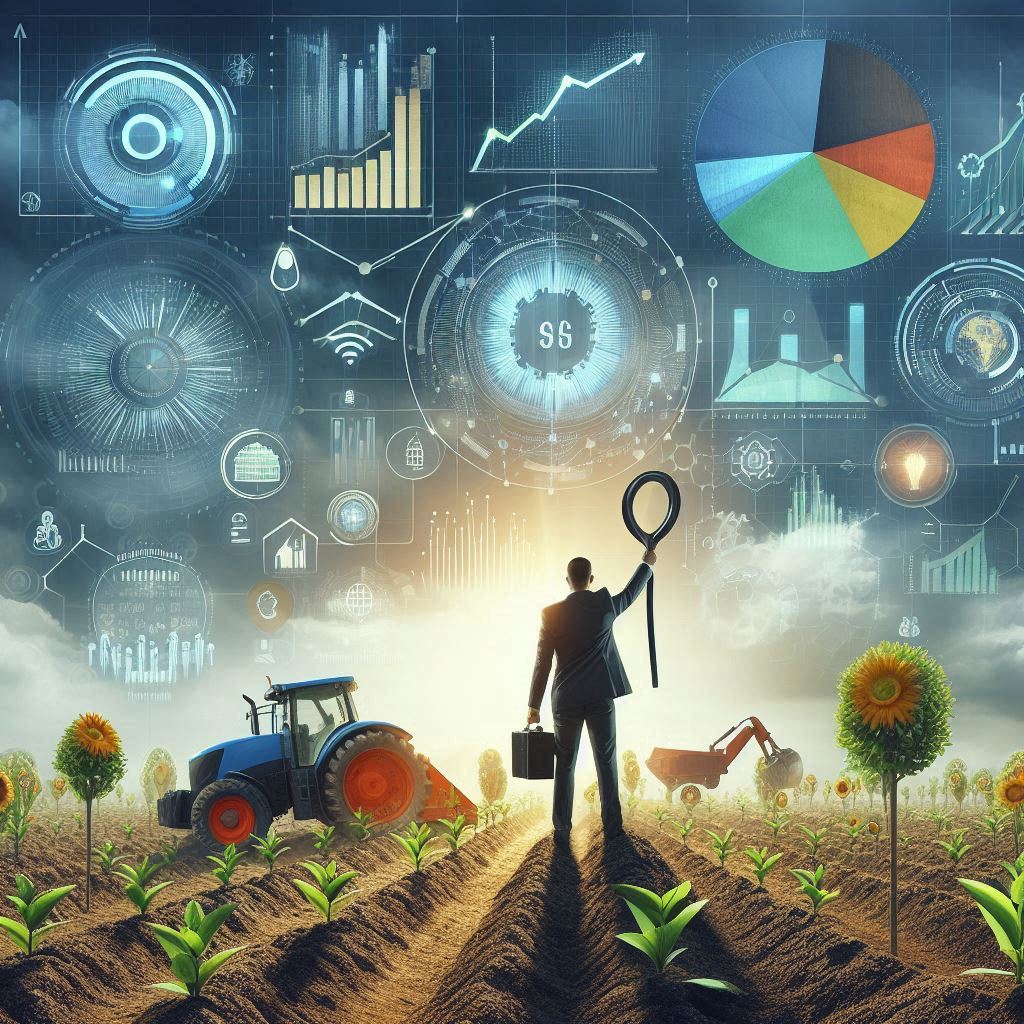In the rapidly evolving field of agriculture, revolutionizing soil management with Business Intelligence (BI) is becoming a pivotal strategy. The integration of advanced BI tools offers farmers unprecedented insights into soil health, fertility, and management practices. By leveraging data analytics, machine learning, and real-time monitoring, BI is transforming traditional soil management methods, leading to sustainable and highly productive agricultural practices.
Revolutionizing Soil Management with Business Intelligence
The need for effective soil management has never been more critical. As the global population continues to grow, the demand for food production increases, placing immense pressure on agricultural systems. Here, business intelligence plays a crucial role by providing actionable insights that help farmers optimize soil health and maximize crop yields.
Understanding Soil Health Through Data Analytics
One of the primary ways BI is revolutionizing soil management is through data analytics. Soil health is influenced by numerous factors, including nutrient levels, pH balance, moisture content, and microbial activity. Traditional methods of assessing soil health often involve time-consuming and labor-intensive processes. However, with BI, farmers can collect and analyze vast amounts of data quickly and efficiently.
Advanced sensors and IoT devices are now being used to monitor soil conditions in real-time. These devices gather data on various soil parameters and send it to a centralized BI system for analysis. The BI tools then process this data, providing farmers with detailed insights into soil health. This real-time monitoring allows for timely interventions, such as adjusting irrigation schedules or applying fertilizers, ultimately enhancing soil fertility and crop productivity.
Predictive Analytics for Soil Fertility Management
Predictive analytics is another powerful aspect of BI that is transforming soil management. By analyzing historical data and identifying patterns, predictive analytics can forecast future soil conditions and fertility levels. This enables farmers to make informed decisions about crop rotation, planting schedules, and soil amendments.
For instance, if predictive models indicate a decline in soil nutrient levels, farmers can take proactive measures to replenish the soil before it adversely affects crop growth. This foresight helps in maintaining soil health, reducing the need for excessive chemical inputs, and promoting sustainable farming practices.
Enhancing Soil Management with Machine Learning
Machine learning, a subset of artificial intelligence, is also playing a significant role in revolutionizing soil management with business intelligence. Machine learning algorithms can process complex datasets and identify correlations that may not be apparent through traditional analysis methods.
In soil management, machine learning can be used to develop models that predict soil behavior under various conditions. These models can help farmers understand how different farming practices impact soil health over time. For example, machine learning can analyze the effects of different irrigation methods, crop varieties, and fertilization techniques on soil properties, allowing farmers to adopt the most effective practices for their specific conditions.
Real-Time Soil Monitoring for Precision Agriculture
Precision agriculture relies heavily on real-time data, and BI tools provide the necessary framework for collecting, analyzing, and acting on this data. With real-time soil monitoring, farmers can achieve a level of precision that was previously unattainable.
Real-time soil monitoring systems use sensors to continuously measure soil parameters such as moisture, temperature, and nutrient levels. This data is transmitted to a BI platform, where it is analyzed to provide actionable insights. Farmers can receive alerts and recommendations on their mobile devices, enabling them to make immediate adjustments to their soil management practices. This level of precision ensures that resources are used efficiently, minimizing waste and maximizing crop yields.
Integrating GIS with Business Intelligence for Soil Mapping
Geographic Information Systems (GIS) are essential tools in modern soil management, and their integration with BI systems takes soil mapping to the next level. GIS allows farmers to create detailed maps of their fields, highlighting variations in soil properties across different areas.
By combining GIS data with BI analytics, farmers can gain a comprehensive understanding of soil variability within their fields. This information is crucial for implementing site-specific management practices. For instance, farmers can identify areas with nutrient deficiencies and apply targeted treatments, rather than treating the entire field uniformly. This approach not only improves soil health but also reduces costs and environmental impact.
Sustainable Soil Management Practices with Business Intelligence
Sustainability is a key focus in modern agriculture, and BI is instrumental in promoting sustainable soil management practices. By providing insights into soil health and fertility, BI tools help farmers adopt practices that preserve soil integrity and enhance its long-term productivity.
For example, BI can analyze the impact of cover crops, reduced tillage, and organic amendments on soil health. These practices are known to improve soil structure, increase organic matter, and enhance microbial activity. By quantifying their benefits through data analytics, BI encourages farmers to adopt sustainable practices that contribute to soil conservation and resilience.
Conclusion
Revolutionizing soil management with Business Intelligence is transforming the agricultural landscape. By leveraging data analytics, predictive models, machine learning, and real-time monitoring, BI provides farmers with the tools they need to optimize soil health and maximize crop yields. As the demand for sustainable and efficient farming practices continues to grow, the integration of BI in soil management will play an increasingly vital role in ensuring food security and environmental sustainability.
FAQ
What is Business Intelligence in soil management?
Business Intelligence in soil management involves using data analytics, machine learning, and real-time monitoring to optimize soil health and fertility. It provides farmers with actionable insights that help improve crop productivity and sustainability.
How does real-time soil monitoring work?
Real-time soil monitoring uses sensors to continuously measure soil parameters such as moisture, temperature, and nutrient levels. The data is transmitted to a BI platform for analysis, providing farmers with immediate insights and recommendations for soil management.
What are the benefits of using predictive analytics in soil management?
Predictive analytics forecasts future soil conditions and fertility levels, allowing farmers to make informed decisions about crop rotation, planting schedules, and soil amendments. It helps maintain soil health and promotes sustainable farming practices.
How does machine learning contribute to soil management?
Machine learning algorithms analyze complex datasets to identify patterns and correlations in soil behavior. This helps develop predictive models that guide farmers in adopting effective soil management practices.
Why is integrating GIS with Business Intelligence important for soil mapping?
Integrating GIS with BI provides detailed maps of soil variability within fields. This information is crucial for implementing site-specific management practices, improving soil health, and reducing costs and environmental impact.
How does Business Intelligence promote sustainable soil management practices?
BI provides insights into the impact of sustainable practices such as cover crops, reduced tillage, and organic amendments on soil health. By quantifying their benefits, BI encourages farmers to adopt practices that preserve soil integrity and enhance long-term productivity.



